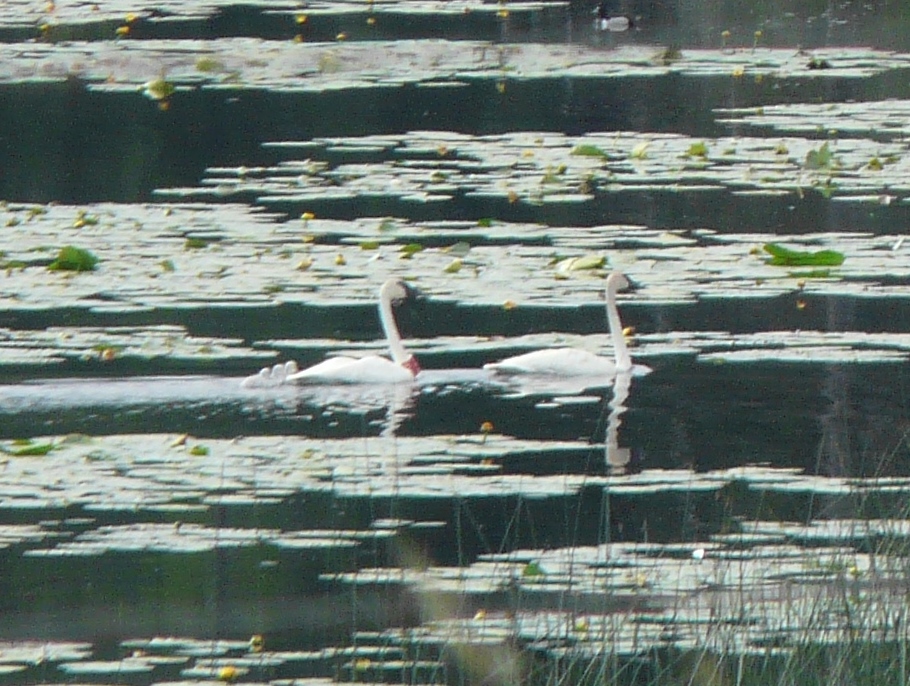
The first Blackfoot cygnets of 2015 hatched from a nest on a pond near Ovando on June 7! 6A6 and his mate (an unbanded female from the wild) are proud parents with 3 cygnets. 6A6 was released several miles north of Ovando as a one-year-old swan in 2011. He returned to the area the following summer with an unbanded female and the pair settled on their territory shortly after that.
They have returned faithfully to their territory every year since, first attempting to nest in 2013. Their nest that year, along with others in the Blackfoot, failed during incubation, possibly due to some wild storms that passed through the area.
In 2014 they again attempted to nest. Just at the time their eggs were due to hatch, I spotted them almost a mile from their nest in a little wetland, with no cygnets. I canoed out to the nest to see if there were any clues as to why it had failed. A tiny fragment of eggshell was all I found, so we aren’t sure exactly what happened. It is possible that the eggs hatched and the adults tried to move the cygnets to another wetland, as they sometimes do, and something preyed upon them on the way.
This year they faced another obstacle, as one of the pair–we think the female– was seen to hit a power line while flying back to the nest site after feeding in a nearby wetland. After sitting in a pasture for a time, apparently stunned, she made it back to the nest and seemed to be okay. This pair has successfully completed another reproductive step and managed to produce cygnets, but still have a long road ahead to raise them to adulthood.
As with many aspects of swan biology, it can be difficult to figure out exactly what is going on with nesting and reproduction. We have at least 4 other pairs in the area that are on their territories, but their nesting status is unclear. Some nests are impossible to see from the ground, due to vegetation in the way. Because we don’t want to risk disturbing them, it can be difficult to determine what they are doing, and because swans will leave their nest (covering their eggs quite well) during warm periods, catching the female on the nest even if she is in incubation stage can be challenging. Hopefully we will see these other pairs with cygnets soon as well!
